Did you know that luffa sponges, those unique and effective exfoliating tools, are actually derived from a type of vegetable? That’s right! Luffa sponges are not a product of the ocean, but rather, they are grown on land as a part of the Cucurbitaceae family. These versatile and eco-friendly sponges are created from the fibrous interior of dried luffa fruits. If you’re interested in exploring the fascinating world of luffa sponges, then this essential luffa seeds guide is perfect for you!
Key Takeaways:
- Discover the surprising connection between luffa sponges and vegetables.
- Learn how luffa seeds can be the starting point for a sustainable and eco-friendly lifestyle.
- Find out the essential steps for starting luffa seeds indoors and transplanting them outside.
- Explore the care and maintenance required to grow healthy luffa plants.
- Uncover the best techniques for supporting luffa vines and harvesting luffa gourds.
Why Grow Your Own Luffa Seeds
https://www.youtube.com/watch?v=kFeKAiBiVVs
Growing your own luffa seeds offers numerous benefits, promoting a sustainable and eco-friendly lifestyle. By cultivating your own luffa sponges, you can reduce your reliance on synthetic sponges and plastic-based products, contributing to a more environmentally conscious way of living.
Imagine the satisfaction of knowing that you are using natural, biodegradable sponges that can be composted after use, minimizing waste and minimizing your carbon footprint.
When you grow your own luffa seeds, you have complete control over the quality and purity of the sponges. You can ensure that they are organic and free from any harmful chemicals or additives, providing a safe and eco-friendly alternative to commercially available options.
Experience the joy of nurturing and harvesting your own luffa sponges, knowing that they are not only good for you but also good for the planet.
By embracing the process of growing luffa seeds, you are actively participating in a sustainable and eco-friendly lifestyle. You can take pride in the fact that you are making a positive impact on the environment while enjoying the many benefits of using natural, biodegradable luffa sponges for your cleaning and personal care needs.
Start your journey towards sustainable living today by growing your own luffa seeds!
| Benefits | Traditional Synthetic Sponges | Growing Luffa Seeds |
|---|---|---|
| Environmental Impact | Non-biodegradable, contribute to landfill waste | Biodegradable, can be composted after use |
| Chemical Exposure | Potential exposure to chemical additives | Organic and chemical-free |
| Quality Control | Limited control over product quality | Complete control over purity and quality |
| Satisfaction | Generic and impersonal | Fulfilling and rewarding experience |
Starting Luffa Seeds Indoors
In colder zones, it is necessary to start luffa seeds indoors to give them a head start before transplanting them outside. By starting luffa seeds indoors, you can ensure optimal growth and increase the chances of a successful harvest.
Here is a step-by-step guide on how to start luffa seeds indoors:
- Soak the luffa seeds in water for 24 hours. This soaking process helps improve germination rates and prepares the seeds for planting.
- Moisten the soil mixture. Fill 4-inch pots with a well-draining potting mix, and water it thoroughly to ensure moisture.
- Sow the luffa seeds. Plant the seeds about half an inch deep into the moistened soil. Space them evenly, leaving enough room for the seedlings to grow.
- Cover the pots. To create a favorable environment for germination, cover the pots with plastic wrap or a humidity dome. This helps retain moisture and maintain stable humidity levels.
- Provide warmth. Luffa seeds prefer warm temperatures for germination. Consider using a seed heat pad or placing the pots in a warm location to provide the necessary warmth.
- Monitor and care for the seedlings. Once the luffa seeds sprout, remove the cover and place the pots in a well-lit area. Ensure the seedlings receive adequate light and moisture while avoiding overwatering.
Starting luffa seeds indoors allows you to control the growing conditions and establish healthy seedlings. It also extends the growing season in colder climates, giving the plants a head start before transplanting them outside.
Tips for successful seedling care:
- Water the seedlings regularly. Keep the soil moist, but avoid overwatering to prevent root rot.
- Provide sufficient light. Place the seedlings in a sunny location or use grow lights to ensure they receive the necessary light for healthy growth.
- Transplant seedlings outdoors at the right time. Wait until all risk of frost has passed and the soil has warmed up before transplanting luffa seedlings into the garden.
Starting luffa seeds indoors is an essential step in the journey of growing your own luffa sponges. With proper care and attention, you can ensure strong and healthy seedlings ready for successful transplantation.
| Benefits of Starting Luffa Seeds Indoors |
|---|
| Allows for early germination and seedling development |
| Provides control over growing conditions |
| Extends the growing season in colder regions |
| Increases success rate for a healthy harvest |
Hardening Off and Transplanting Luffa Seedlings
When it comes to successfully growing luffa plants, proper hardening off and transplanting techniques are essential. Hardening off is the process of acclimatizing your luffa seedlings to outdoor conditions, preparing them for the transition from the controlled environment indoors to the unpredictable outdoor environment. This step is crucial for ensuring the seedlings’ survival and promoting healthy growth.
To harden off your luffa seedlings, start by gradually exposing them to outdoor temperatures and sunlight. Begin by placing them in a sheltered location outside for a few hours each day, gradually increasing the amount of time they spend outside over the course of one to two weeks. This gradual exposure helps the seedlings adjust to temperature fluctuations, wind, and sunlight.
It is important to closely monitor the weather during this period. Avoid exposing the seedlings to frost or extremely cold temperatures, as luffa plants are sensitive to cold and frost damage can be detrimental to their growth. Wait until the risk of frost has passed and the weather has consistently warmed up before transplanting your luffa seedlings into the garden.
Choose a sunny spot in your garden to transplant the luffa seedlings. Luffa plants require full sun to thrive and produce abundant fruit. The soil should be well-draining and rich in organic matter. Prepare the planting holes by digging them slightly larger than the rootball of the seedlings, ensuring there is enough space for them to settle in comfortably.
Before transplanting, gently loosen the seedlings’ rootballs to encourage new root growth. Place the seedlings in the prepared planting holes and backfill the soil, pressing it firmly around the roots to ensure good soil-to-root contact. Water the transplanted seedlings thoroughly to help settle the soil and provide moisture.
As luffa plants are vigorous climbers, it is important to provide a sturdy structure for the vines to climb on. A trellis or fence is ideal for supporting the luffa vines and preventing them from sprawling on the ground. Make sure the structure is strong enough to support the weight of the mature plants and the growing luffa fruits.
“Hardening off and transplanting are crucial stages in the growth of luffa seedlings. By gradually exposing them to outdoor conditions and providing appropriate structural support, you can ensure the success of your luffa plants.”
If there is a sudden cold spell or the weather turns chilly after transplanting, it is important to protect the seedlings from cold temperatures. Covering them with a vented cloche or a plastic bottle can provide temporary protection to prevent frost damage. However, it is important to remove the coverings during the day to allow for proper air circulation and prevent overheating.
Following these practices for hardening off and transplanting luffa seedlings will help set them up for success and promote healthy growth in your garden. By providing the right conditions and support, you can look forward to a bountiful harvest of luffa sponges that you can enjoy or share with others.
| Benefits of Hardening Off and Transplanting Luffa Seedlings |
|---|
| Gradually exposes seedlings to outdoor conditions |
| Promotes healthy growth and survival of seedlings |
| Helps seedlings adjust to temperature fluctuations, wind, and sunlight |
| Choose a sunny spot in the garden for transplanting |
| Provide a sturdy structure for the vines to climb on |
| Protect seedlings from cold temperatures if necessary |
Care and Maintenance of Luffa Plants
Growing and caring for luffa plants requires attention and proper maintenance to ensure their healthy development. Here are some essential tips for caring for your luffa plants.
Caring for Luffa Plants
To ensure the well-being of your luffa plants, it is crucial to provide them with consistent moisture. Keep the soil consistently moist but not saturated by watering deeply whenever the soil feels dry. Be cautious not to let them dry out or overwater them, as luffa plants are sensitive to fluctuations in moisture levels.
Watering your luffa plants:
- Regularly check the moisture level of the soil by touching it with your fingers.
- Water deeply, ensuring the water reaches the root zone.
- Watering in the morning or late afternoon helps minimize evaporation.
Fertilizing your luffa plants:
- Fertilize your luffa plants regularly with organic fertilizer to provide the necessary nutrients for healthy growth.
- Apply the fertilizer according to the manufacturer’s instructions.
- Avoid over-fertilizing, as this can lead to excessive foliage growth at the expense of fruit production.
Preventing Pests and Diseases
Luffa plants can be susceptible to various pests and diseases that can hinder their growth and productivity. Here are some common issues to watch out for:
Pests that can affect luffa plants:
- Cucumber beetles
- Aphids
- Squash bugs
- Vine borers
Diseases that can affect luffa plants:
- Powdery mildew
- Blight
Regularly monitor your luffa plants for any signs of pest or disease issues. If infestations or infections occur, take prompt action to treat them. Organic pest control methods, such as handpicking pests, introducing beneficial insects, or using organic pesticides, can help manage these problems effectively.
By providing proper care, watering, fertilizing, and monitoring for pests and diseases, you can ensure the health and productivity of your luffa plants.
Supporting Luffa Vines
When growing luffa plants, it is crucial to provide adequate support for their vigorous vines. Luffa vines can grow up to 30 feet long, and without proper support, they may become tangled, inhibiting growth and harvest. By trellising luffa plants or utilizing a chain link fence, you can ensure that the vines have the necessary structure to climb and thrive.
Trellising Luffa Plants
Trellising luffa plants is an effective method of support that not only helps the vines grow straight but also facilitates better air circulation and easier harvest of the straight loofahs. When choosing a trellis, consider its height and width to accommodate the expansive growth of luffa vines. It’s important to select a trellis that allows the hanging luffa gourds to drape down, promoting straight growth.
“Trellising luffa plants not only provides the necessary support but also helps with air circulation and makes it easier to harvest the straight loofahs.”
Chain Link Fence Support
If you don’t have a trellis available, a chain link fence can serve as an excellent alternative for supporting luffa vines. The open design of the fence allows the vines to weave through and find support as they grow. The fence also provides stability and durability while offering a suitable structure for the vines to climb.
With either trellising or a chain link fence, ensure that the supporting structure is firmly secured to the ground to withstand the weight of the growing vines and the hanging luffa gourds.
Table: Comparison of Trellising and Chain Link Fence Support for Luffa Vines
| Trellising | Chain Link Fence |
|---|---|
| Provides vertical support for vines | Allows vines to weave through for support |
| Promotes straight growth of luffa gourds | Offers stability and durability |
| Improves air circulation | Provides a suitable structure for climbing |
| Facilitates easier harvest | No additional setup required |
Both trellising and using a chain link fence are effective methods for supporting luffa vines. Choose the option that best suits your garden space and preferences. Whichever method you choose, remember to secure the supporting structure well and regularly monitor the vines to train them towards the support as they grow.
Harvesting Luffa Gourds
The time to harvest luffa gourds is before the arrival of frost, as luffa plants are not frost-tolerant. It is best to harvest the gourds while they are still green, as they will develop the desired fibrous interior at this stage. To determine if a luffa gourd is ready for harvest, gently squeeze it. Ripe gourds should feel light and have a fibrous texture.
Harvesting luffa gourds too early may result in a fleshy and gooey interior, which is not ideal for making luffa sponges. Therefore, it is crucial to pay attention to the texture and weight of the gourds when determining their readiness for harvest.
After harvesting the luffa gourds, it is necessary to dry them before they can be used as luffa sponges. Start by peeling off the green skin of the gourd, exposing the fibrous interior. Then, allow the gourds to air dry in a cool and well-ventilated area. This drying process may take several weeks, but it is essential for transforming the gourds into usable luffa sponges.
Once the luffa gourds have fully dried, they can be stored indefinitely for future use as luffa sponges. The fibrous structure of the gourds makes them excellent for exfoliating the skin and providing a natural scrubbing surface for various cleaning tasks.
| Benefits of Harvesting Luffa Gourds |
|---|
| 1. Eco-Friendly: Harvesting luffa gourds and using them as luffa sponges helps reduce dependence on synthetic sponges and promotes a more sustainable lifestyle. |
| 2. Cost-Effective: Growing and harvesting your own luffa gourds can be a cost-effective alternative to purchasing luffa sponges from stores. |
| 3. Organic and Chemical-Free: By harvesting your own luffa gourds, you can ensure that the sponges are organic and free from chemicals or additives. |
| 4. Versatile: Luffa sponges have various uses, including exfoliating the skin, cleaning pots and pans, and even creating unique crafts. |
Uses of Luffa Sponges
Luffa sponges are versatile household items with multiple uses. They are commonly used in the shower as loofahs for exfoliating and cleansing the skin. Their fibrous texture gently removes dead skin cells, leaving your skin feeling smooth and rejuvenated. Luffa sponges can be used with or without soap, making them a natural and eco-friendly option for your skincare routine.
In addition to skincare, luffa sponges can also be used in the kitchen for eco-friendly cleaning. The rough surface of the sponge makes it excellent for scrubbing pots, pans, and other utensils. Unlike synthetic sponges or steel wool, luffa sponges are gentle on surfaces and won’t scratch or damage them. They are a sustainable alternative to disposable cleaning products, reducing waste in your home.
“I love using luffa sponges in my daily skincare routine. They exfoliate my skin gently and leave it feeling fresh and clean. I also use them in the kitchen for scrubbing stubborn stains on my cookware. I appreciate how environmentally friendly and versatile they are!” – Amanda, luffa enthusiast
One of the best things about luffa sponges is that they are eco-friendly and biodegradable. After use, instead of contributing to plastic waste, you can compost your luffa sponge. Simply cut it into smaller pieces and add it to your compost pile or bin. This way, you can give back to the environment by nourishing your garden with organic matter.
Furthermore, luffa sponges are not limited to their traditional uses. Get creative and repurpose them to make natural soap dishes or unique crafts. Their natural texture and shape make them an excellent material for various DIY projects. Let your imagination run wild and explore the many possibilities!
Luffa Sponge Uses Comparison
| Use | Benefits |
|---|---|
| Skincare | – Natural exfoliation – Cleanses and rejuvenates the skin – Eco-friendly alternative to synthetic sponges |
| Kitchen Cleaning | – Eco-friendly scrubbing of pots and pans – Gentle on surfaces – Sustainable alternative to disposable cleaning products |
| Composting | – Biodegradable – Adds organic matter to compost bins – Reduces plastic waste |
| Crafting | – Natural texture for creative projects – Repurpose for soap dishes and unique crafts – Environmentally friendly material |
As you can see, luffa sponges have numerous uses that make them a valuable addition to your home. From skincare to kitchen cleaning, they provide eco-friendly alternatives that promote a sustainable lifestyle. Start incorporating luffa sponges into your daily routine and enjoy their natural exfoliation and cleaning properties.
Benefits of Growing Luffa Seeds
Growing your own luffa seeds and cultivating your own luffa sponges has several benefits. It allows you to have control over the quality and purity of the sponges, ensuring that they are organic and free from chemicals or additives. By embracing sustainable living and an eco-friendly lifestyle through luffa cultivation, you contribute to the reduction of synthetic sponges and plastic-based products in the environment.
Embracing sustainable living and an eco-friendly lifestyle through luffa cultivation.
By growing luffa seeds, you actively participate in sustainable living practices that promote a healthier planet. The environmental benefits of luffa cultivation are twofold. Firstly, luffa sponges are biodegradable, making them an ideal alternative to non-biodegradable synthetic sponges found in most households. When you compost your used luffa sponges, they break down naturally and contribute to the replenishment of the soil. Secondly, reducing reliance on plastic-based products by replacing them with luffa sponges decreases the demand for plastic manufacturing, ultimately reducing plastic waste and its associated environmental impact.
Reducing reliance on plastic-based products by replacing them with luffa sponges decreases the demand for plastic manufacturing.
Moreover, growing luffa seeds aligns with an eco-friendly lifestyle. By making conscious choices and embracing natural alternatives, you actively promote a sustainable environment. Choosing to grow luffa seeds is a small step that can have a significant positive impact.
By making conscious choices and embracing natural alternatives, you actively promote a sustainable environment.
Benefits of Growing Luffa Seeds:
- Control over the quality and purity of luffa sponges
- Reduction in reliance on synthetic sponges and plastic-based products
- Promotion of sustainable living and an eco-friendly lifestyle
- Biodegradable alternative to non-biodegradable sponges
- Contribution to composting and soil replenishment
- Decrease in plastic waste and environmental impact
Where to Buy Luffa Seeds
If you’re ready to embark on your luffa growing journey, you’ll need to find a reliable source for luffa seeds. Fortunately, there are several options available, both online and in physical gardening stores. When purchasing luffa seeds, it’s important to choose high-quality seeds from trusted suppliers to ensure successful germination and healthy plant growth.
Online Luffa Seed Purchase
Many reputable online seed suppliers offer a wide selection of luffa seeds, including organic and heirloom varieties. Here are a few popular options for purchasing luffa seeds online:
- Johnny’s Selected Seeds: A well-known seed company that offers a variety of luffa seed options. Their website provides detailed information about each seed variety, making it easier to choose the right one for your needs.
- Baker Creek Heirloom Seeds: Known for their extensive selection of heirloom seeds, Baker Creek offers organic luffa seeds with different characteristics and growth habits. Their website also offers helpful tips and resources for successful luffa cultivation.
- Southern Exposure Seed Exchange: This seed company specializes in heirloom and open-pollinated seeds, including a selection of luffa seed varieties suitable for different climates. Their website provides detailed growing instructions and tips to help you get started.
Luffa Seed Suppliers
In addition to online seed suppliers, you may also find luffa seeds in local gardening stores or nurseries. Check with your nearest gardening store or contact local nurseries to inquire about their seed selection. Supporting local businesses not only ensures you’re getting fresh seeds but also promotes the growth of the gardening community in your area.
| Seed Supplier | Website |
|---|---|
| Johnny’s Selected Seeds | www.johnnyseeds.com |
| Baker Creek Heirloom Seeds | www.rareseeds.com |
| Southern Exposure Seed Exchange | www.southernexposure.com |
No matter where you choose to buy your luffa seeds, remember to read reviews, check for any specific requirements or instructions, and verify that the supplier is reputable. With quality seeds and proper care, you’ll soon be on your way to a successful luffa growing experience!
Conclusion
Growing luffa seeds and cultivating your own luffa sponges is a gratifying journey that offers numerous rewards. By following the proper techniques for starting seeds, transplanting seedlings, and caring for luffa plants, you can successfully grow your own sustainable luffa sponges right in your backyard.
Providing the necessary support for the vines, monitoring for pests and diseases, and harvesting the luffa gourds at the optimal time are essential steps in the process. With attention to detail and proper care, you’ll be able to enjoy the benefits of having high-quality, organic luffa sponges for personal use or as unique and eco-friendly gifts.
From reducing reliance on synthetic sponges to promoting a more sustainable and eco-friendly lifestyle, growing luffa seeds empowers you to make a positive impact on the environment. By growing your own luffa sponges, you have control over the quality and purity of the sponges, ensuring they are free from chemicals or additives. This exciting and fulfilling endeavor allows you to create a biodegradable alternative to conventional household items.
In conclusion, by embarking on the journey of growing luffa seeds and nurturing luffa plants, you not only enjoy the satisfaction of cultivating your own unique sponges but also contribute to a more sustainable future. So, get started on your luffa-growing adventure and discover the joy of reaping the rewards of your own eco-friendly harvest.

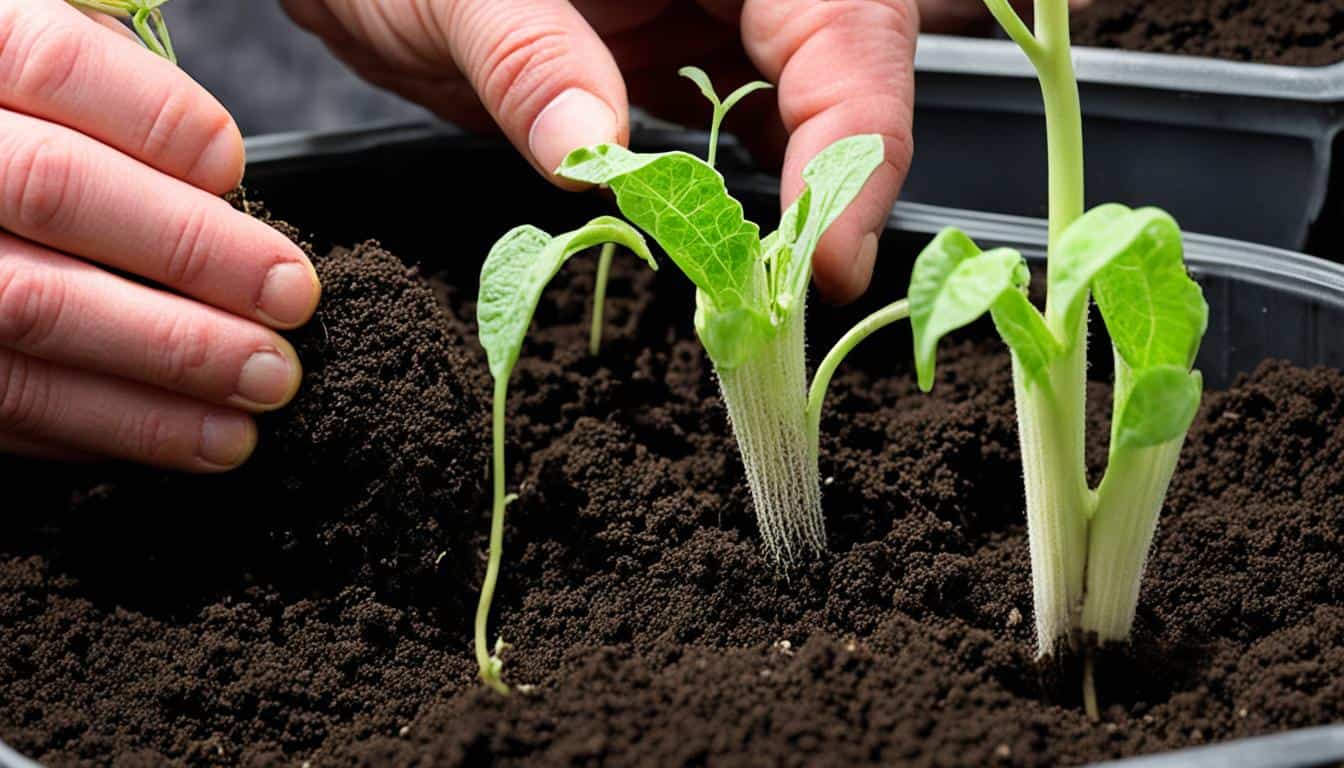
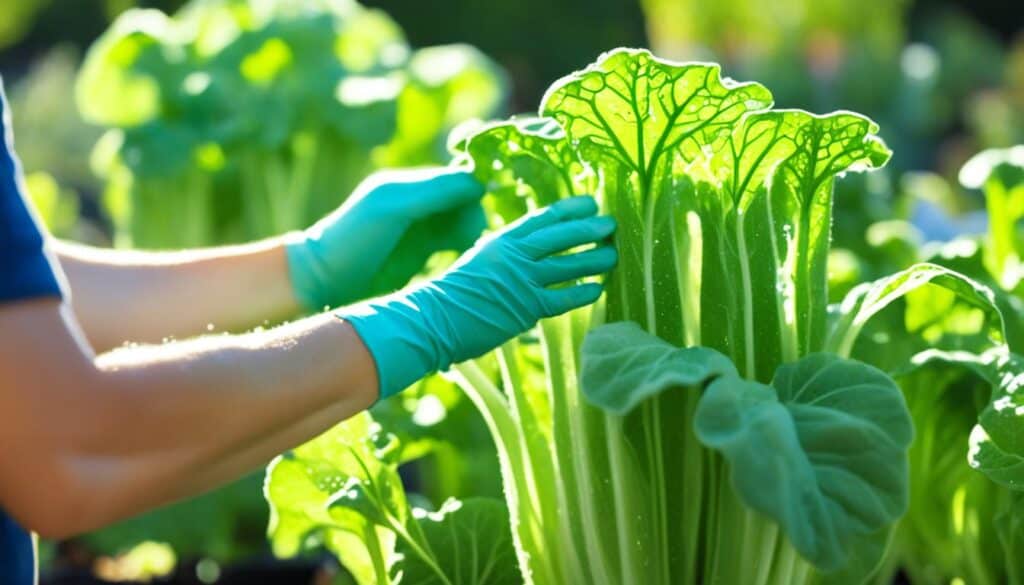
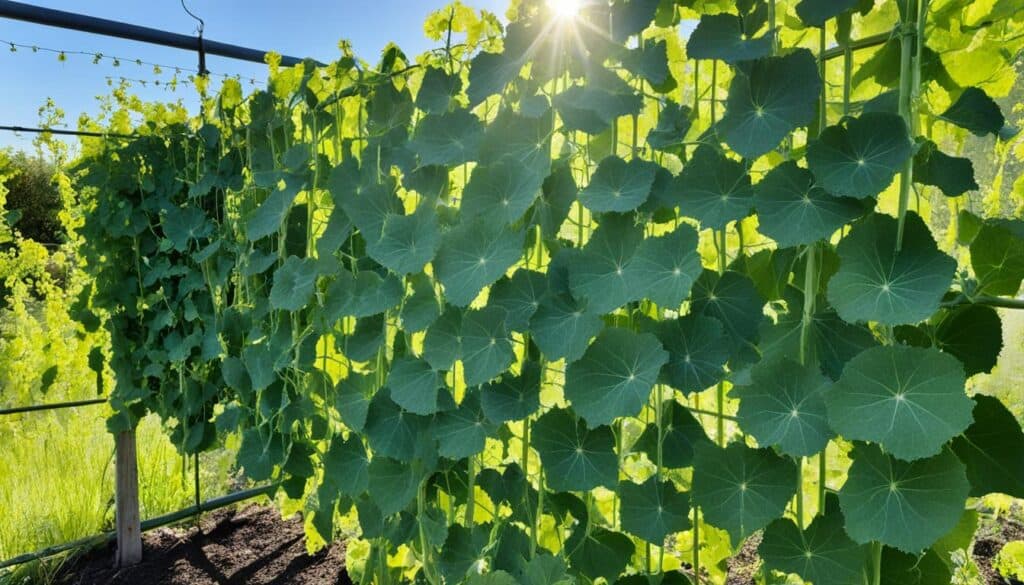

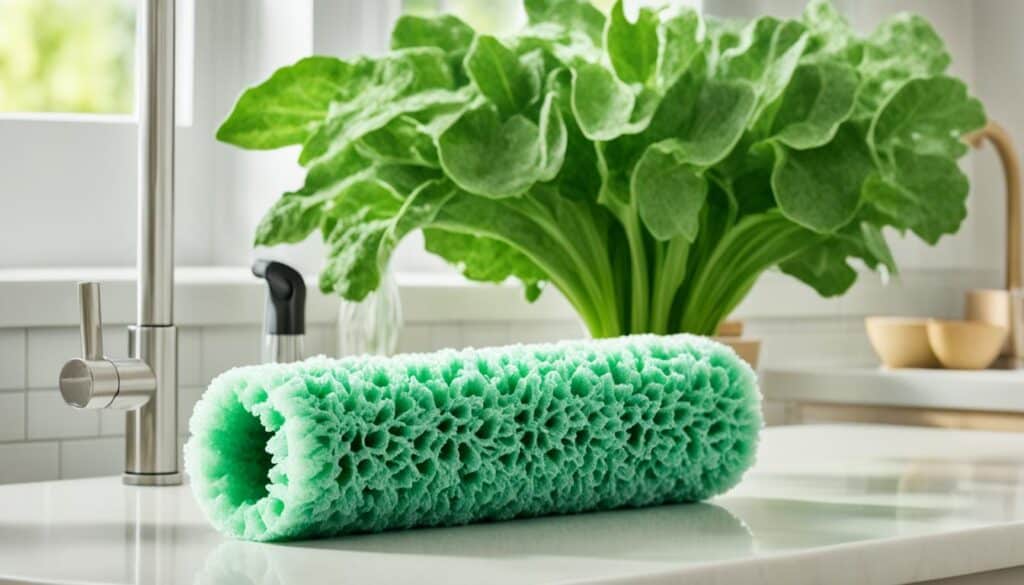
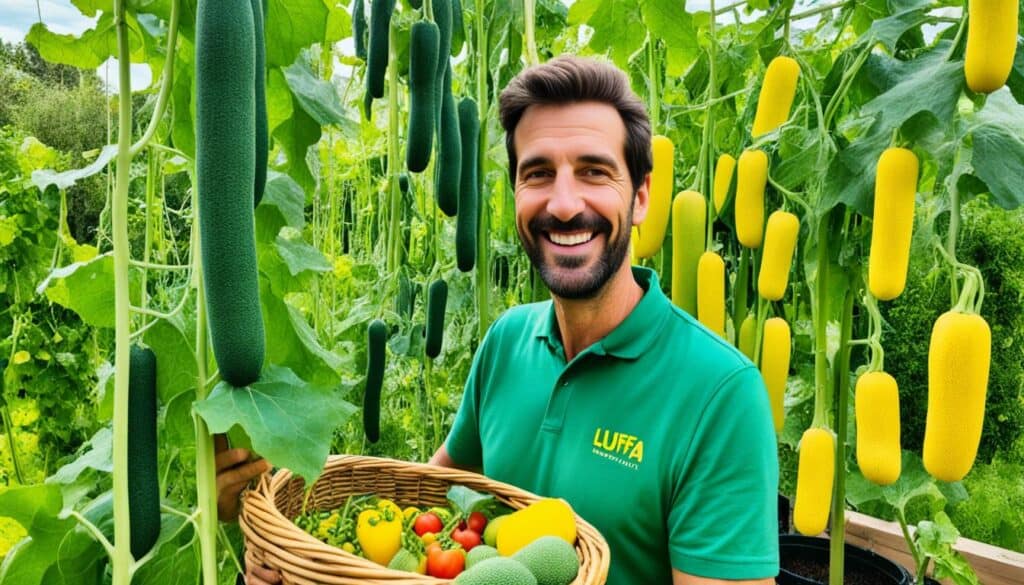



Leave a Reply